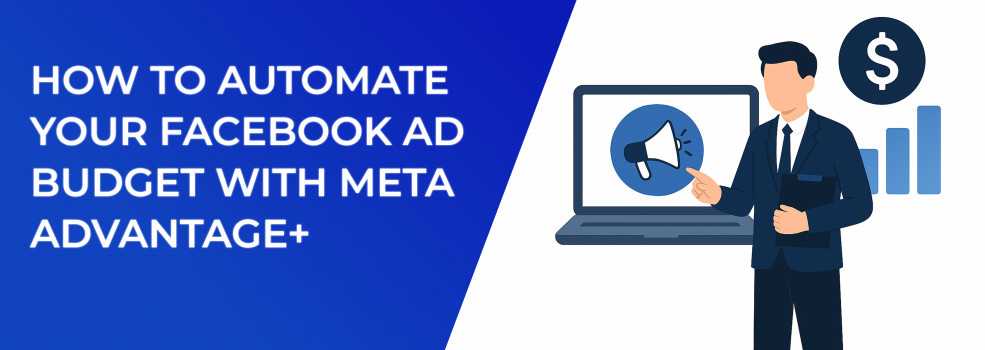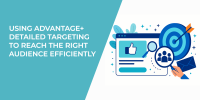Keeping profitable campaigns alive on Facebook can feel like chasing shadows. Budgets creep away from the highest-value audiences, click-through rates slide while you sleep, and the weekly ads analysis call becomes a defense of why average cost per click suddenly spiked. Meta’s Advantage + campaign-budget feature solves much of that pain by letting machine learning shift spend minute by minute toward the ad sets that bring the best incremental value.
Below you will find a practical, field-tested guide that folds in the most-searched phrases around Facebook ad performance and campaign budget optimization so the article stays discoverable while remaining genuinely useful.
1. Why Manual Budget Tweaks Hit a Ceiling
Humans adjust budgets in bursts; the auction moves every second. That mismatch is the reason you have probably seen at least one of these issues:
-
Lagging ad impressions each afternoon because the morning CPM spike quietly exhausted half your budget
-
A respectable average click-through rate in one audience that masks wasted reach in others
-
Relief when weekend CPC looks cheap, followed by dread when Monday’s conversion-rate report reveals those clicks never bought anything
The longer a media buyer stays locked in reactive mode, the harder it becomes to meet a stable return-on-ad-spend target.
2. How Advantage+ Reallocates Spend in Real Time
Advantage + continuously compares every active ad set. It ingests signals such as Facebook ads CPM, predicted cost per result, recent purchase value, and bid competition. Whenever the system detects a better opportunity — say, an audience showing a rising conversion rate with steady CPM — it pushes more budget in that direction and pulls back from weaker performers.
A quick look at how Advantage+ decides where every extra dollar should go.
Key takeaway: Automation does not replace your strategy; it replaces the thousand twenty-cent decisions you never have time to make.
Give the Algorithm Space to Learn
Start with broad placements and audiences of at least two million people. Narrow targeting can starve the model of data, slowing its ability to predict which impressions will turn into buyers.
If you need a crash course on expanding audiences without wasting spend, dive into Facebook Ad Targeting 101.
3. A Five-Step Setup Checklist
-
In Ads Manager click Create Campaign and choose an outcome such as Sales.
Not sure which objective truly fits your funnel? Meta Ad Campaign Objectives Explained walks you through the decision. -
Turn on Advantage+ campaign budget in the campaign-settings panel.
For a full play-by-play of Advantage-budget quirks, see How to Optimize Advantage Campaign Budget for Scalable Facebook Ads. -
Enter a daily or lifetime budget you can afford to test (many brands begin around $50–100 per day).
Still weighing daily versus lifetime caps? Daily vs Lifetime Budgets: What’s Better for Facebook Campaign Performance? breaks down the trade-offs. -
Keep placements set to Advantage (automatic) until learning completes.
-
Publish and wait for the Learning label to disappear, usually after three to seven conversions.
Tip: Judge performance only after the first three conversion cycles. Restarting too early resets the learning phase and wipes out useful history.
If Learning drags on, use the checklist in How to Finish the Facebook Learning Phase Quickly to speed things up.
4. Four Guardrails That Protect Profit
Before the table below, remember that each lever interacts with the others. Over-tightening any one of them, such as shrinking audience size, can slow data flow and mislead the algorithm’s choices.
Consistent refreshes help you avoid rising costs, see Ad Fatigue on Facebook: How to Spot It Early and Fix It Fast for warning signs. After you apply these guardrails, check performance metrics twice per week.
Continuous curiosity, not constant interference, keeps Advantage + on track.
5. Layering Rules and Analytics for Added Control
Automation is powerful, yet it thrives inside a framework you define.
-
Set automated rules, for example, pause any ad if cost per landing-page view rises thirty percent above the campaign average for two hours in a row. Set up guardrails in minutes with the workflows outlined in How to Use Automated Rules to Improve Facebook Campaign Efficiency.
-
Build dashboards that combine CPM, CTR, CPC, and ROAS in one view so trends jump out before they become problems.
-
Run quarterly lift tests to confirm that incremental revenue is real rather than cannibalized.
These practices let you benefit from algorithmic speed without surrendering oversight.
6. Three Persistent Myths, Clarified
Before you fully commit to Advantage+, it’s worth clearing up a few common myths that might be holding you back or causing unnecessary hesitation.
You still control core settings like budget, bid limits, and audience targeting, even with Advantage+.
-
“Advantage+ erases control.” You still specify budget caps, bid limits, schedules, creatives, and geo filters. And if an ad set refuses to spend, troubleshoot with Why You See “Ad Set May Get Zero” on Facebook and How to Fix It.
-
“It benefits only big spenders.” Campaigns as small as $50 per day can see lower average CPC once conversion tracking is reliable.
-
“Manual rules always outperform.” Short bursts may win, but over several weeks, the algorithm’s continuous auction-level adjustments usually deliver better optimization.
7. Putting It All Together
By turning on automatic budget optimization for Facebook ads, you free yourself to craft stronger offers and more compelling stories while the platform handles the penny-level math. Start small, trust the learning phase, and apply the guardrails outlined above. In a few weeks, you will spend less time fighting budget drift and more time scaling the audiences and creatives that actually grow revenue.
Ready to move from late-night budget edits to strategic decision-making? Give Advantage+ the room it needs, measure results against the metrics that matter, and let the data guide your next big campaign.

